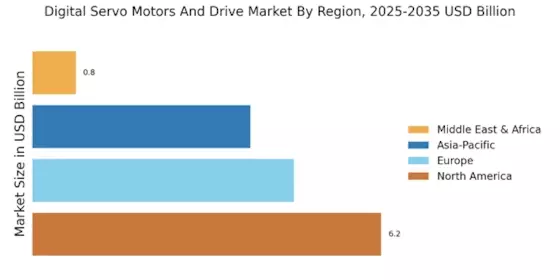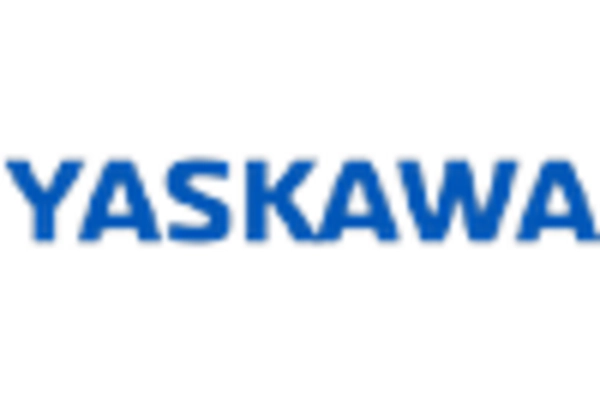Technological Advancements
The Digital Servo Motors And Drive Market is experiencing a surge in demand due to rapid technological advancements. Innovations in control algorithms, sensor technologies, and communication protocols are enhancing the performance and efficiency of servo systems. For instance, the integration of artificial intelligence and machine learning is enabling predictive maintenance and real-time monitoring, which can significantly reduce downtime. According to recent data, the market for digital servo motors is projected to grow at a compound annual growth rate of approximately 7.5% over the next five years. This growth is indicative of the increasing reliance on automation and precision in various sectors, including manufacturing and robotics, thereby driving the Digital Servo Motors And Drive Market forward.
Expansion of Electric Vehicles
The expansion of electric vehicles (EVs) is significantly influencing the Digital Servo Motors And Drive Market. As the automotive sector transitions towards electrification, the demand for high-performance servo motors is increasing, particularly in applications such as electric power steering and advanced driver-assistance systems. The market for electric vehicles is projected to grow exponentially, with estimates suggesting that EV sales could reach over 30 million units annually by 2030. This shift not only enhances the demand for digital servo motors but also encourages innovation in drive technologies, thereby propelling the Digital Servo Motors And Drive Market forward. The integration of servo motors in EVs is expected to improve vehicle performance and energy efficiency, further solidifying their role in the automotive landscape.
Rising Automation in Industries
The Digital Servo Motors And Drive Market is being propelled by the increasing trend of automation across various sectors. Industries such as automotive, aerospace, and electronics are adopting automated solutions to enhance productivity and reduce operational costs. The demand for high-performance servo motors is particularly pronounced in applications requiring precise motion control, such as CNC machines and robotic arms. Market data suggests that the automation sector is expected to expand significantly, with investments in smart manufacturing technologies reaching unprecedented levels. This shift towards automation not only boosts the efficiency of production processes but also elevates the demand for advanced digital servo motors and drives, thereby influencing the Digital Servo Motors And Drive Market.
Increased Investment in Robotics
The Digital Servo Motors And Drive Market is benefiting from increased investment in robotics across various sectors. As industries recognize the potential of robotics to enhance productivity and efficiency, there is a growing demand for advanced servo motors that can provide precise control and high performance. The robotics market is anticipated to witness substantial growth, with investments projected to exceed 100 billion dollars by 2025. This influx of capital is likely to drive innovation in servo motor technologies, as manufacturers seek to develop solutions that meet the evolving needs of robotic applications. Consequently, the Digital Servo Motors And Drive Market is poised for growth, as the integration of sophisticated servo systems becomes essential for the advancement of robotic technologies.
Growing Demand for Energy Efficiency
Energy efficiency is becoming a critical focus within the Digital Servo Motors And Drive Market. As industries strive to reduce energy consumption and minimize operational costs, the demand for energy-efficient servo motors is on the rise. Digital servo motors, known for their superior performance and lower energy usage compared to traditional motors, are increasingly favored in various applications. Recent studies indicate that energy-efficient solutions can lead to savings of up to 30% in energy costs, making them an attractive option for manufacturers. This growing emphasis on sustainability and energy conservation is likely to drive the Digital Servo Motors And Drive Market, as companies seek to align with environmental regulations and consumer expectations.

















Leave a Comment